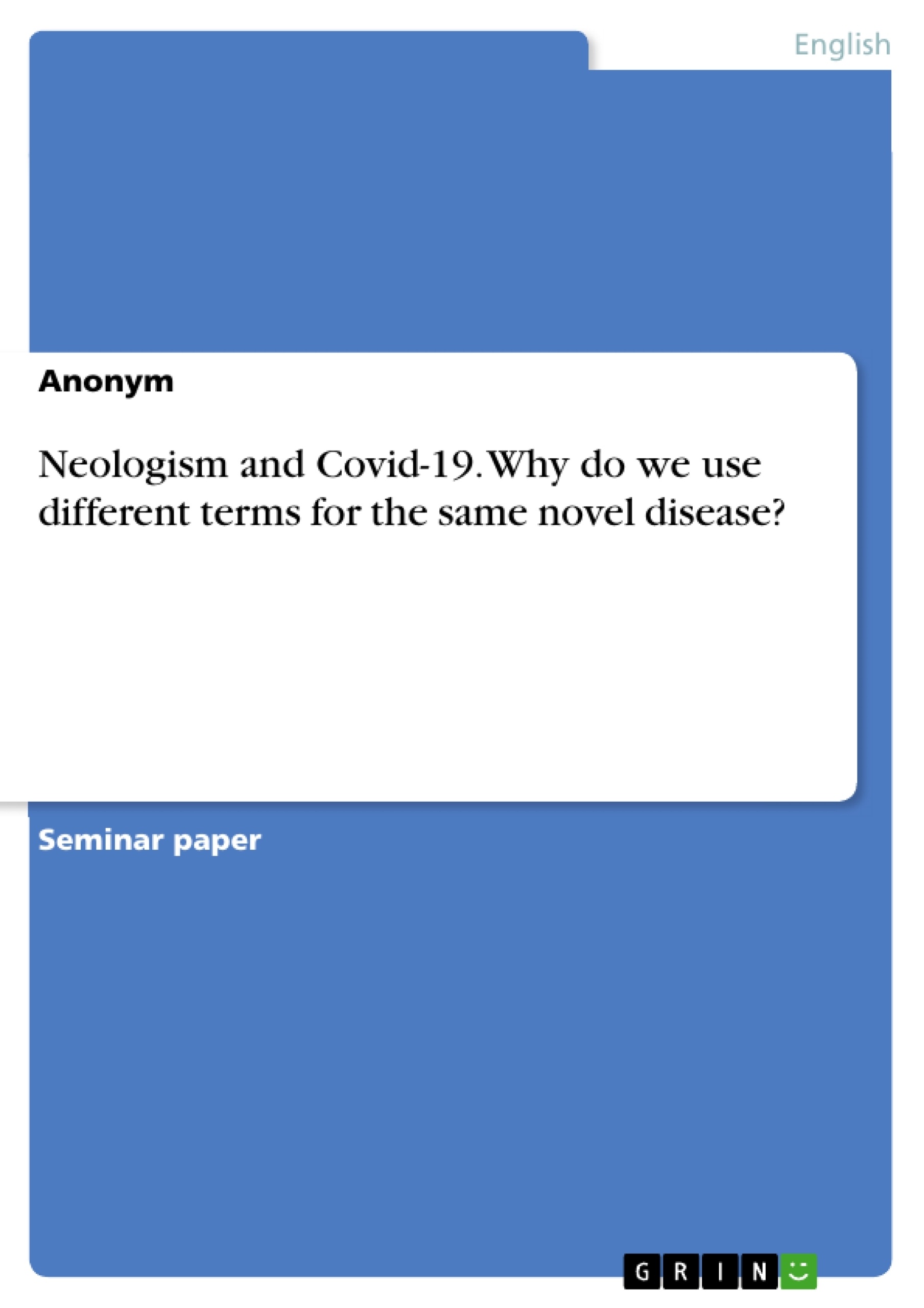Even though the words "Coronavirus, Covid-19, Rona and Sars-CoV-2" refer to the same disease, they are used in slightly different context throughout the media. This paper will focus on why we use different terms synchronously to refer to one novel disease. Moreover, this paper will have a look at the differences between the words, in which context and how often they are used.
After scanning previous literature concerning this topic, I was able to formulate two hypothesis.
One: The different terms fit different academic levels and are used in distinctive situations. (e.g. "Sars-CoV-2" main use in scientific fields, "Rona" more informal in everyday expressions)
Two: The shorter a word is, the more it is used to refer to the virus.
Inhaltsverzeichnis (Table of Contents)
- Introduction
- Literature review
- Methodology
- Data analysis and results
- Comparison of appearance
- Collocations
- Discussion
- Conclusion
- Appendix
- Sources and references
Zielsetzung und Themenschwerpunkte (Objectives and Key Themes)
This paper aims to analyze the reasons behind the usage of multiple terms for the same novel disease, namely SARS-CoV-2, in English. The paper examines the frequency and contexts of usage for the terms "Coronavirus, Rona, Covid-19, and Sars-CoV-2" in media and the differences in their meaning and function.
- Neologisms and their significance in reflecting changing language usage
- The specific usage patterns of different terms for the novel disease
- Factors influencing the selection of specific terms in different contexts
- The relationship between word length and frequency of usage
- The impact of the pandemic on everyday language and communication
Zusammenfassung der Kapitel (Chapter Summaries)
- Introduction: This chapter introduces the topic of neologisms emerging during the COVID-19 pandemic and focuses specifically on the use of different terms to refer to the novel disease. It discusses the impact of the pandemic on daily life and the resulting linguistic changes, highlighting the dynamic nature of language.
- Literature review: This chapter provides a brief overview of existing research related to neologisms in the context of COVID-19. It discusses the prevalence of the terms "Coronavirus, Rona, Covid-19, and Sars-CoV-2" in media and the lack of in-depth analysis on their specific divergence.
- Methodology: This chapter outlines the research methods used to collect and analyze data for the study. It mentions the Coronavirus Corpus as the primary source and details the methods for comparing term frequency and collocations.
- Data analysis and results (Part 1: Comparison of appearance): This chapter presents the results of the frequency analysis, demonstrating the distinctive appearance of each term in the corpus. It highlights the fact that despite referring to the same disease, these terms are adopted with varying frequencies.
Schlüsselwörter (Keywords)
This paper focuses on neologisms related to COVID-19, specifically examining the usage of different terms like "Coronavirus, Rona, Covid-19, and Sars-CoV-2". The research analyzes the frequency, context, and meaning of these terms, exploring the reasons behind their distinct usage patterns. The study explores the dynamic nature of language and its adaptation to new circumstances, ultimately contributing to the understanding of linguistic changes in times of global pandemics.
- Citar trabajo
- Anonym (Autor), 2020, Neologism and Covid-19. Why do we use different terms for the same novel disease?, Múnich, GRIN Verlag, https://www.grin.com/document/1161519



